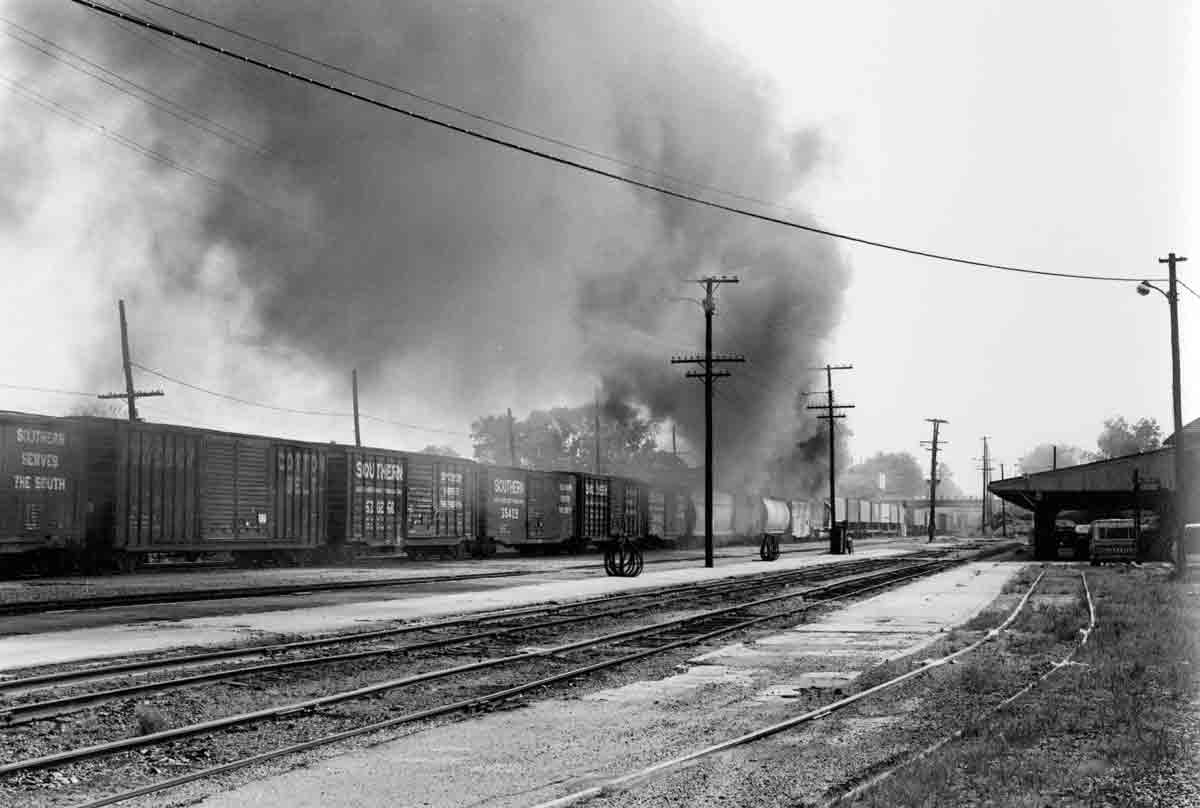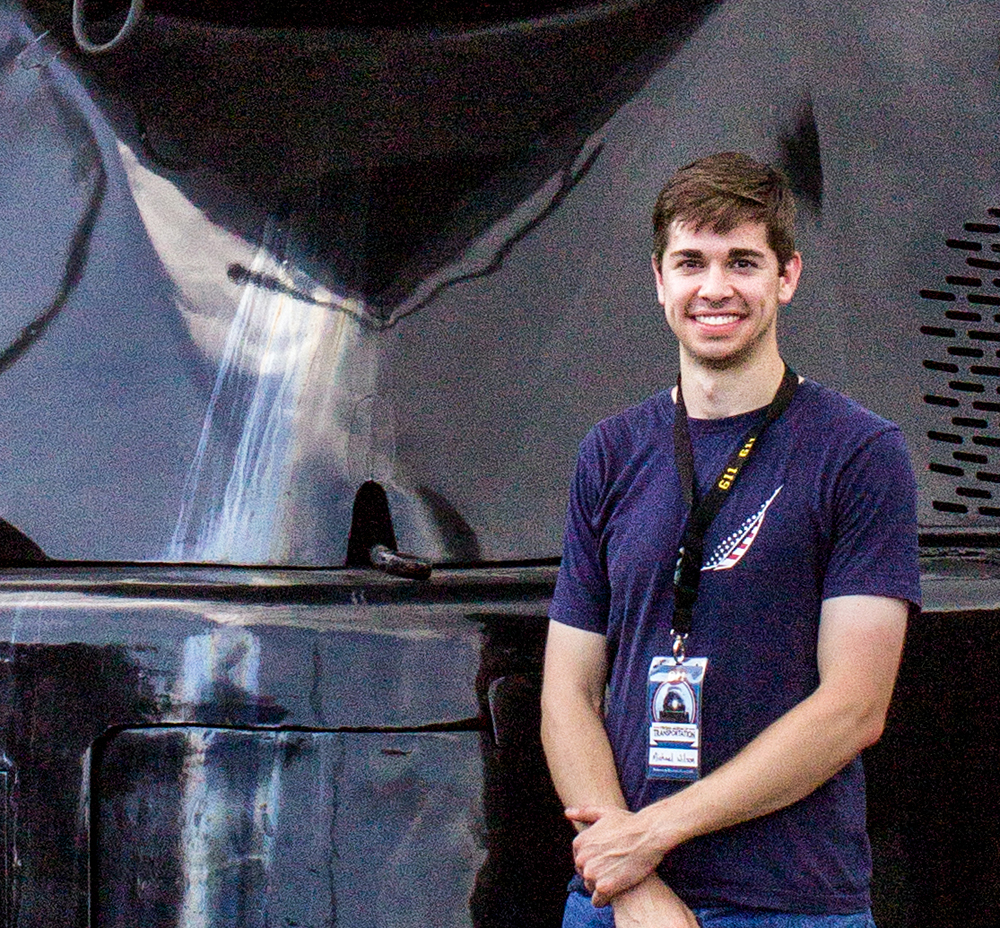My favorite freight diesel back then was the Electro-Motive SD45. At 3,600 h.p., they were the biggest and most powerful freight units the Southern had. On the Southern, road-switcher-type units were run long hood forward as much as the “normal” way. With their outward-slanting radiators, the SD45s looked particularly brawny when they came at you long hood forward.
Some of the more important trains ran with mid-train “slave” units controlled by radio from the head end. The slaves were accompanied by radio cars, which received the signal from the front, then passed it on to the slave locomotive through multiple-unit connections. Early on, the practice was to put two units on the point and two about halfway back in the train. After a while this was changed to three up front and one about two-thirds back.
On the typical summer day of July 17, 1977, I was in Salisbury, N.C., to take a few photos of the road’s new MP15DCs. A freight was departing southbound in the afternoon behind an SD45, SD35, and SD40-2. Southern’s lower-numbered SD45s, such as 3116 on this train, had white number boards indicating that they were “slave masters” (units from which mid-train units could be controlled). As the cars rolled slowly by, SD45 3134 showed up in mid-train with a radio car. About this time the train began to accelerate and the 3134 started to pour out thick black smoke. The more it was notched out the worse the smoke became. The 3134 was apparently the victim of a turbocharger failure. Imagine my dismay at finding one of my mighty SD45s in such sickly condition.
I recorded its passing on film but at the same time was having worried thoughts. Did the train crew have any idea of what was happening? Should I try to alert someone?
I finally concluded that someone would find out about the sick SD45 soon enough. I wonder if the head-end crew complained of a loss of power behind them.
First published in Summer 2008 Classic Trains magazine.
Learn more about railroad history by signing up for the Classic Trains e-mail newsletter. It’s a free monthly e-mail devoted to the golden years of railroading.














